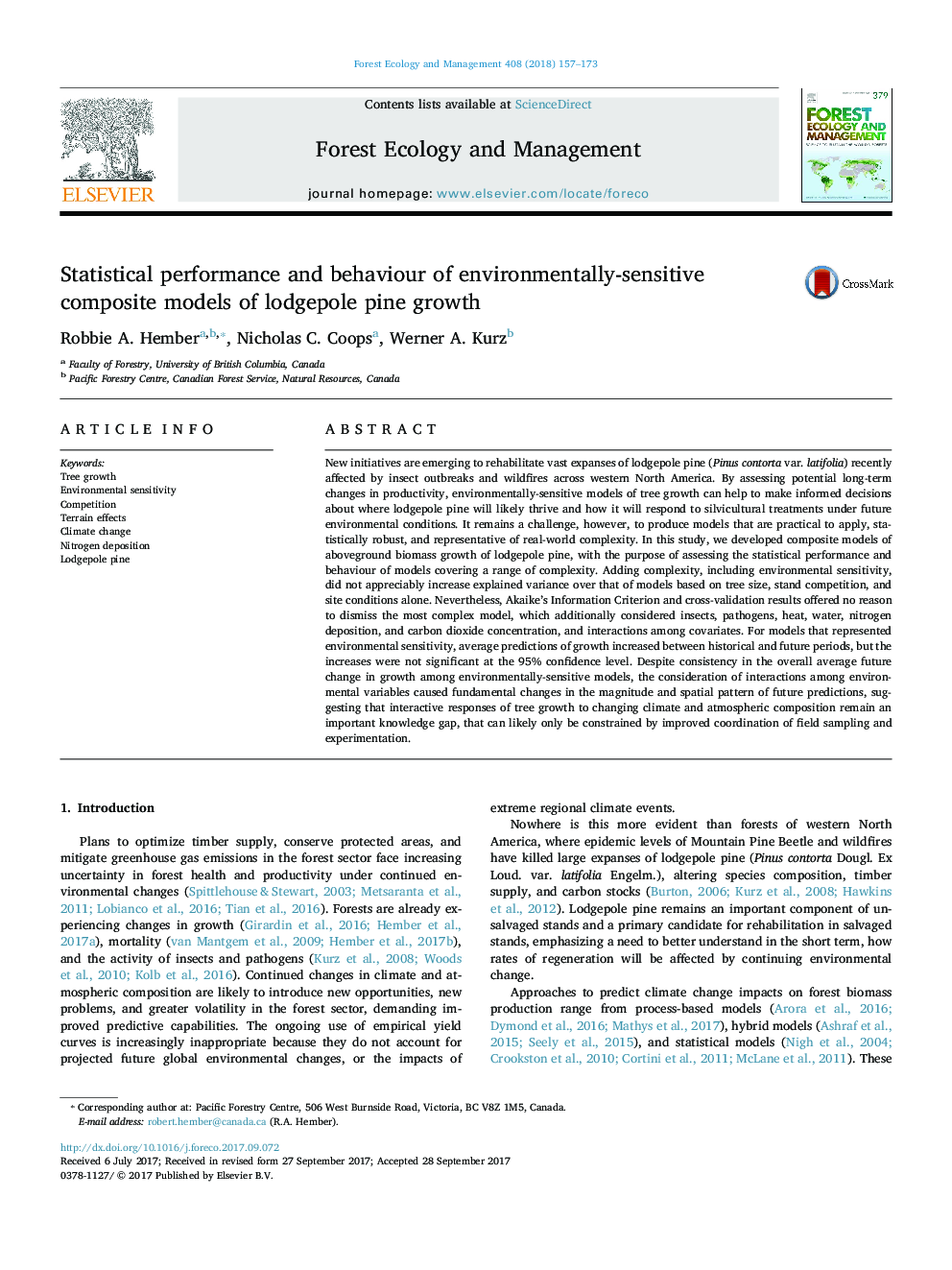| Article ID | Journal | Published Year | Pages | File Type |
|---|---|---|---|---|
| 6541921 | Forest Ecology and Management | 2018 | 17 Pages |
Abstract
New initiatives are emerging to rehabilitate vast expanses of lodgepole pine (Pinus contorta var. latifolia) recently affected by insect outbreaks and wildfires across western North America. By assessing potential long-term changes in productivity, environmentally-sensitive models of tree growth can help to make informed decisions about where lodgepole pine will likely thrive and how it will respond to silvicultural treatments under future environmental conditions. It remains a challenge, however, to produce models that are practical to apply, statistically robust, and representative of real-world complexity. In this study, we developed composite models of aboveground biomass growth of lodgepole pine, with the purpose of assessing the statistical performance and behaviour of models covering a range of complexity. Adding complexity, including environmental sensitivity, did not appreciably increase explained variance over that of models based on tree size, stand competition, and site conditions alone. Nevertheless, Akaike's Information Criterion and cross-validation results offered no reason to dismiss the most complex model, which additionally considered insects, pathogens, heat, water, nitrogen deposition, and carbon dioxide concentration, and interactions among covariates. For models that represented environmental sensitivity, average predictions of growth increased between historical and future periods, but the increases were not significant at the 95% confidence level. Despite consistency in the overall average future change in growth among environmentally-sensitive models, the consideration of interactions among environmental variables caused fundamental changes in the magnitude and spatial pattern of future predictions, suggesting that interactive responses of tree growth to changing climate and atmospheric composition remain an important knowledge gap, that can likely only be constrained by improved coordination of field sampling and experimentation.
Keywords
Related Topics
Life Sciences
Agricultural and Biological Sciences
Ecology, Evolution, Behavior and Systematics
Authors
Robbie A. Hember, Nicholas C. Coops, Werner A. Kurz,
